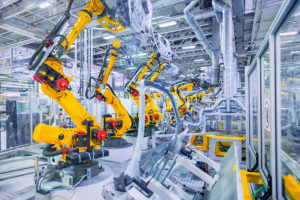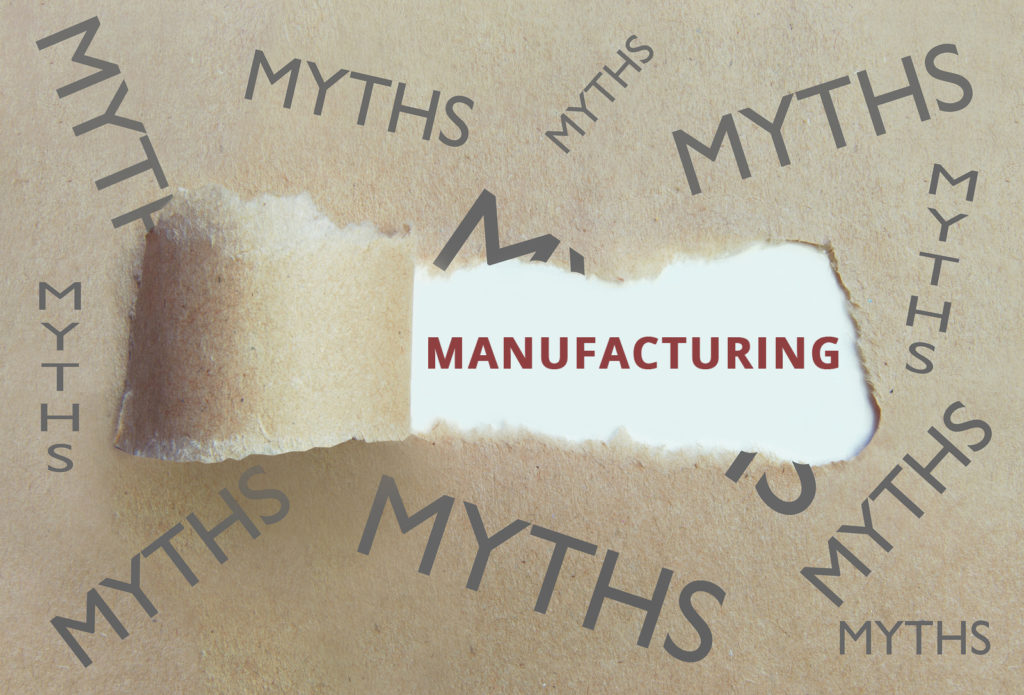Those who work outside the manufacturing industry may not understand what life is like inside actual plants. And, while they might understand that manufacturing has changed since the Industrial Revolution, many likely carry misconceptions about the industry’s professionals: what they do, how they work, and what their workplaces look like. The truth is out there — and it’s time to dispel the myths.
 Myth 1: Manufacturing is dying, so there’s no future for the industry.
Myth 1: Manufacturing is dying, so there’s no future for the industry.
Truth: Manufacturing isn’t dying. Rather, it’s evolving. With automation, additive manufacturing, and Industry 5.0 moving into the spotlight, it’s not the industry it was 100 years ago. And with humans still required to work alongside robots, people remain the driving forces behind industry advancements and won’t be going anywhere anytime soon. Plus, with career growth opportunities for the best in manufacturing — from the plant floor to managerial roles and beyond — it’s an opportunity for lifelong career fulfillment for those who are up to the challenge.
 Myth 2: Manufacturing plants are dangerous, dingy, and dirty places to work.
Myth 2: Manufacturing plants are dangerous, dingy, and dirty places to work.
Truth: Manufacturing as a whole is moving toward state-of-the art plants with technology-driven equipment. That means cleanliness and safety are musts. Why? It’s necessary to keep many new manufacturing machines free of dirt, dust, and debris to safeguard them for long work lives and keep them running at top performance. And when an accident or injury occurs on the plant floor, manufacturers are at risk of losing vital equipment and personnel — as well as at risk for production halts. With tight production schedules, expensive equipment, and difficult-to-replace employees, monetary loss is directly tied to these risks, making it even more important for manufacturers to maintain clean, safe work environments.
 Myth 3: Manufacturing doesn’t offer high-paying careers, and anyone can be trained in industry techniques.
Myth 3: Manufacturing doesn’t offer high-paying careers, and anyone can be trained in industry techniques.
Truth: In such a rapidly advancing industry, manufacturing professionals must be both educated in their fields in general and well-trained in their specific day-to-day job duties. And while the only prerequisite for some entry-level positions is secondary education, manufacturing also requires engineers and C-suite professionals who may need to have bachelor’s, master’s, or doctorate degrees. That means not just anyone can become an industry expert.
With such a high level of knowledge and continuing comprehension necessary, skilled manufacturers in 2016 made an average of over $77,000 per year. They also face challenges every day, and their jobs rely heavily on problem-solving and finding workarounds: talents not every member of the general workforce has. Plus, manufacturers often have difficulty finding educated employees to fill these skilled positions — hence the industry skills gap — so, although job opportunities are in abundance, knowledgeable workers to fill them aren’t.
